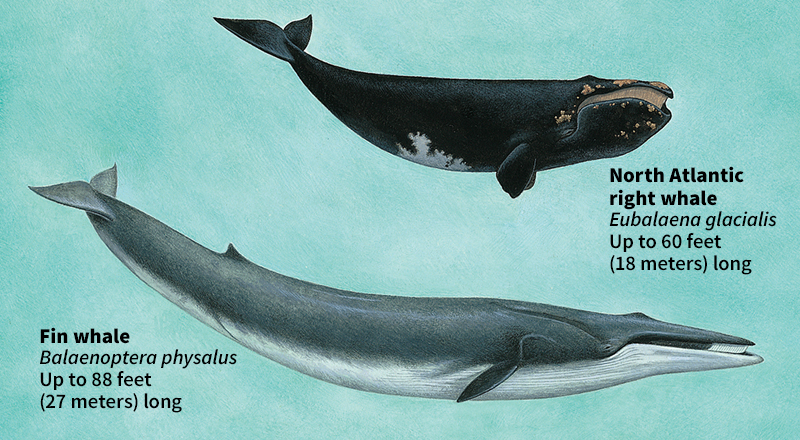Fin whale is the second largest animal on Earth. Only the closely related blue whale is larger. Female fin whales may reach 88 feet (27 meters) in length and weigh as much as 80 tons (70 metric tons). Males are slightly smaller. Fin whales are long and slender. They are dark gray on top and light gray or whitish below. The right side of a fin whale’s lower jaw is bright white. The whale has a hook-shaped dorsal fin on the rear half of the back. The head looks pointed as seen from the side and V-shaped as seen from above. The flippers are long and slender.

The fin whale is a baleen whale. Its mouth features wide plates called baleen. Baleen is composed of keratin, the material that makes up the hair, claws, and fingernails of mammals. The baleen plates hang down from the whale’s upper jaw. The whale uses the baleen to strain food, such as tiny shellfish called krill, from the water. The fin whale feeds by lunging into masses of krill and fish, taking in huge amounts of food and water. Up to 100 grooves or pleats below the fin whale’s mouth and throat enable the mouth to expand to take in the gulp. The pleats contract as the mouth closes, forcing water out through the baleen. The food remains trapped inside. Two or more fin whales often lunge together in apparent attempts to corral the prey.

Fin whales live in all oceans. They migrate to cooler waters nearer the North and South poles to feed in summer and to warmer waters nearer the equator to breed in winter. Fin whales were hunted heavily in the mid-1900’s. International Whaling Commission restrictions now protect fin whales.
